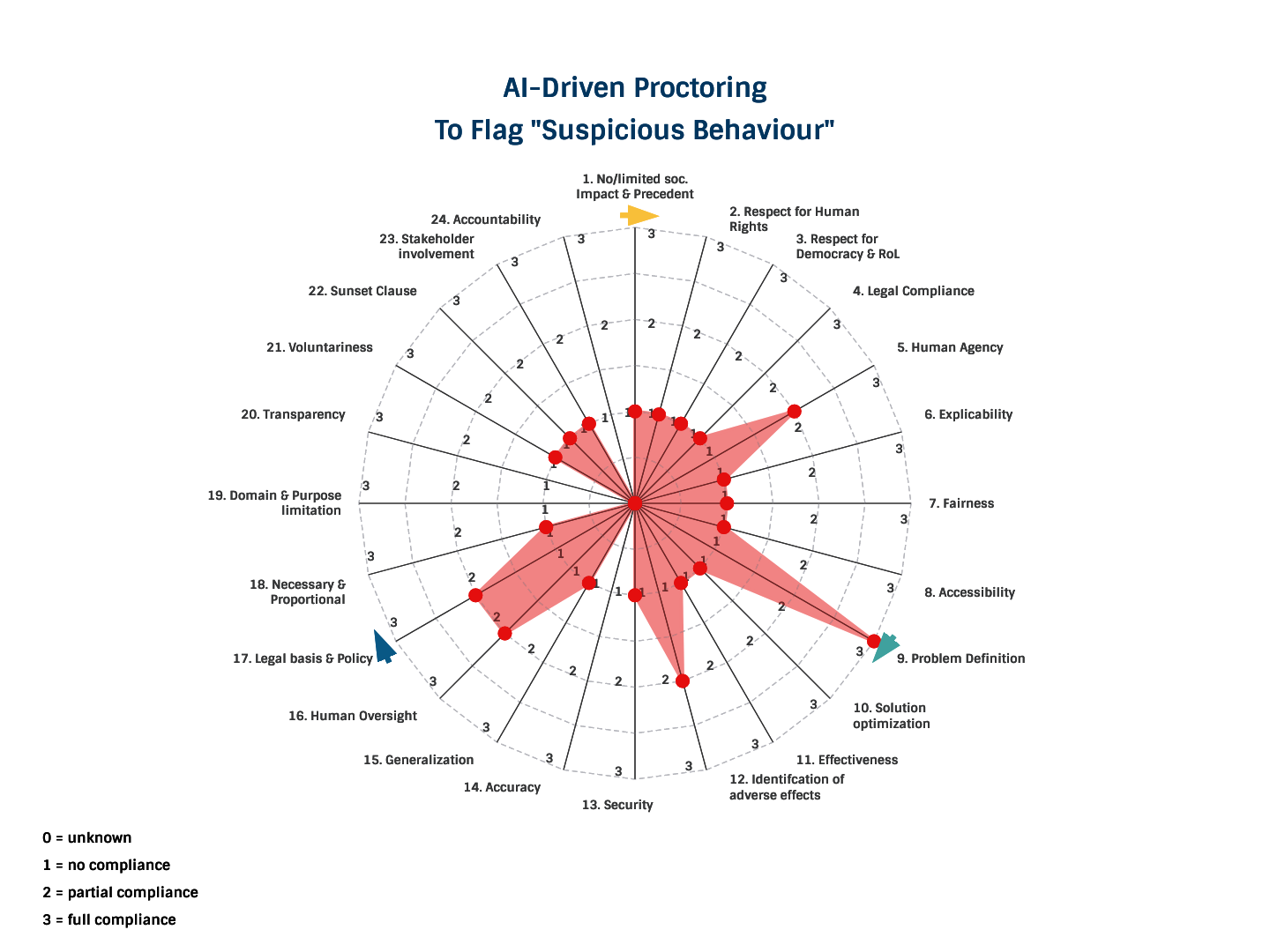ONLINE PROCTORING
ONLINE PROCTORING
- A 2020 poll found that 54% educational institutions now use online proctoring and 23% are considering use of it.
- Increasing amount of online proctoring software contain AI and machine learning components that analyse exam recordings to identify suspicious examinee behaviours or suspicious items in their immediate physical or digital environment.
- Educational institutions use AI components to different degrees and in various ways making it hard to estimate usage of AI-based proctoring.
- No extensive research has been done confirming that with AI-based proctoring is more effective than non-AI-based proctoring at detecting fraud
- Cases of inaccurate detection of fraud have occurred
- Not clear whether AI-based proctoring would be generalisable to real life situations with different circumstances than the training environment
- While it is argued that online proctoring ensures academic integrity and honesty in online examinations, AI-driven versions of online proctoring are a highly intrusive form of surveillance.
- It might set an undesired precedent for the future (more acceptance of) surveillance.
- It deteriorates culture of mutual trust between students and teachers that prevails in educational institutions.
- AI-based proctoring shows elements of non-compliance with existing laws such as the GDPR, where consent cannot be considered freely given for example.
- AI-based proctoring has a negative effect on a student’s human/fundamental right to privacy (including physical and mental integrity and autonomy).
- What is considered “suspicious behaviour” by the AI-driven proctoring system is unclear and usually not accounted for.
- It is unknown whether student’s data is used for other purposes (training the system).
- In a number of use-cases student bodies did not seem to be involved in the decision to apply the system.
Online proctoring is justified based on preserving academic integrity and honesty amid the pandemic. However, it is not clear to which extent AI-based online proctoring is better at detecting fraud than non-AI-based online proctoring. AI-based proctoring has a significant trade-off on student’s privacy, autonomy, and places student’s personal data into a vulnerable position. It is also not clear to which extent access to student’s personal files and web-page visits or monitoring student’s eye-movement is necessary for detecting fraud in examinations.

